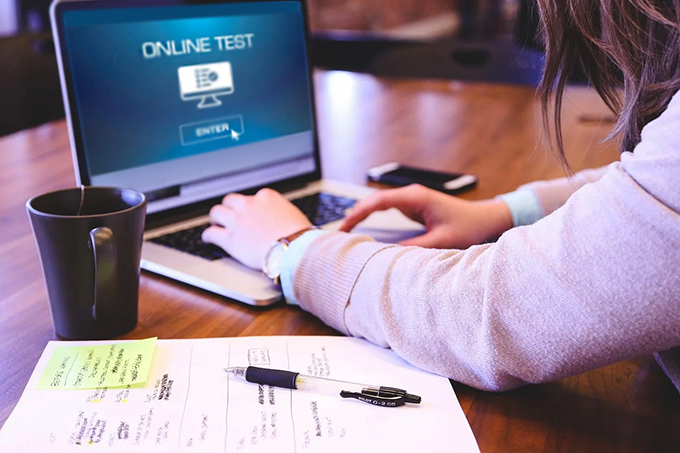
Online education has seen rapid growth, with the global e-learning market expected to reach $457.8 billion by 2026. This growth has fueled a parallel increase in online exams, often raising concerns about the integrity of these assessments.
Institutions increasingly turn to computer screen monitoring software to prevent cheating and ensure fair testing environments. Such software observes on-screen activity, captures periodic screenshots, logs application usage, and restricts internet access to keep exams secure.
Although many traditional businesses already use computer screen monitoring software to boost productivity and streamline operations, the education sector can also benefit from using these software solutions. Screen monitoring has become a core tool in safeguarding online exam integrity, as we’ll explore in the following sections.
Understanding Screen Monitoring Software
Screen monitoring software provides educational institutions with a reliable way to oversee student activities during online exams. It captures everything happening on a user’s screen, from applications to keystrokes, and even specific URLs accessed. This data is collected in real time, giving invigilators an accurate view of each student’s activities.
The software’s functions extend to setting rules around allowed applications or web pages, ensuring students stay within the digital parameters set by the examiners. By collecting precise, ongoing data, computer screen monitoring software creates an environment that is significantly more secure than standard online proctoring alone. Additionally, these systems can detect anomalies or irregular behavior, which helps in identifying potential malpractices during tests. This capability enhances the integrity and credibility of the examination process.
Real-Time Activity Tracking and Screen Sharing
One of the essential features of screen monitoring software is real-time tracking. This allows exam administrators to observe students’ screens directly, removing ambiguity around user actions. Screen sharing serves as an immediate deterrent against cheating, as students are more likely to stay within the allowed applications and resources when they know they are being monitored.
Live monitoring also enables quick intervention if a student attempts any unauthorized activity. Administrators have control over the exam setting and can respond to suspicious behavior as it happens, reducing reliance on post-exam reviews.
Preventing Cheating Through Browser and App Restrictions
Beyond simple observation, screen monitoring software also enforces restrictions on browsers and other applications. This function limits students to specific resources, blocking access to unrelated sites or programs that could facilitate cheating. The restrictions are customizable, allowing administrators to set their lists of allowed and restricted sites or applications.
The software can prevent students from switching to prohibited applications or opening additional tabs, which creates a controlled testing environment. Such restrictions prevent students from using web resources or chat applications to share answers, keeping them focused on the test at hand.
Alerts and Automated Flagging of Suspicious Activity
The software doesn’t rely solely on manual oversight; it includes automated flagging features to identify potential cheating. Irregular behaviors, such as rapidly switching windows or repeatedly opening certain applications, trigger alerts that are logged for administrator review. These alerts allow for prompt action, whether it involves checking in on a particular student or reviewing
flagged behavior in real time. Automated flagging reduces the burden on human monitors and increases the accuracy of spotting dishonest behaviors, enhancing the security of the exam process.
Data Collection and Analysis for Post-Exam Review
Screen monitoring software doesn’t just serve a purpose during the exam; it provides valuable data for post-exam analysis. Logs and recorded sessions offer administrators a full picture of a student’s exam period, detailing their navigation history, application use, and any suspicious behavior flagged by the system. These records allow examiners to audit the entire exam process, addressing any concerns that may have arisen during the test.
This data-driven approach supports the integrity of exams, as administrators can cross-reference behaviors with exam guidelines and, if necessary, take action against any violations discovered in the post-exam review.
Addressing Privacy and Ethical Concerns
While screen monitoring software is effective in securing exams, it also raises questions about privacy. Balancing the need for secure exams with the importance of student privacy requires transparent policies and careful selection of software features. Most providers build in data protection measures, such as encryption, data anonymization, and restricted access to student information.
Schools should communicate their monitoring practices to students, explaining what data will be collected, who will have access to it, and how long it will be stored. Adopting best practices around privacy reassures students that their data remains protected, creating a balance between security and ethical standards.
Conclusion
Screen monitoring software plays a crucial role in upholding online exam integrity by combining real-time observation, automated flagging, and data-rich post-exam analysis. This powerful combination not only deters cheating but also provides administrators with concrete evidence of student actions throughout the test. Institutions using this technology can provide fairer testing environments and better control over exam processes. As online education grows, screen monitoring stands as a vital tool in maintaining trust in online assessments.
